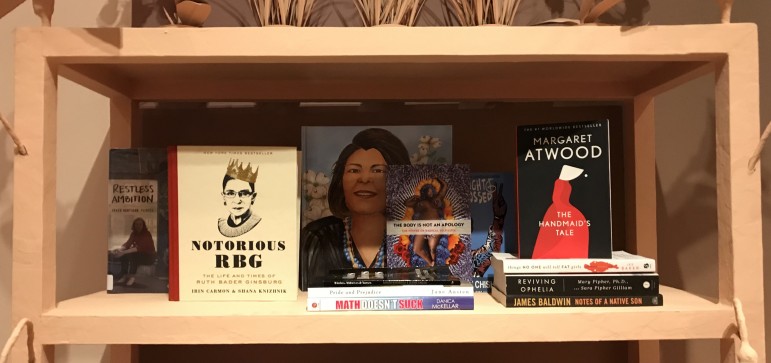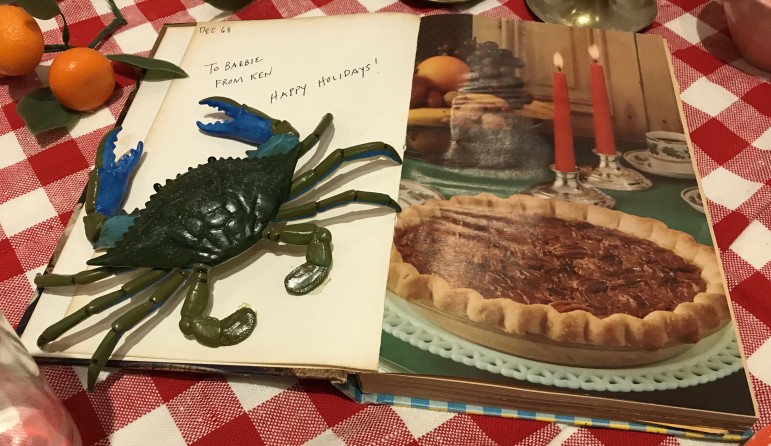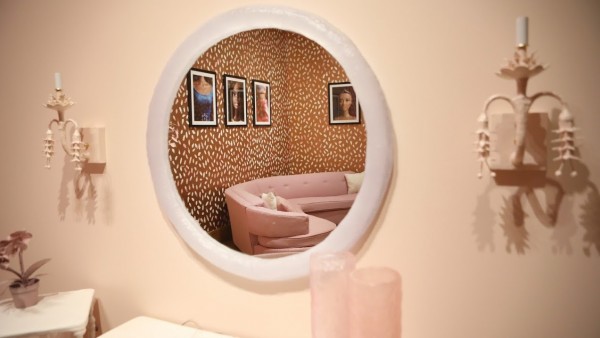Museum Exhibit Explores Empowerment Barbie
Believe it or not, Barbie is reaching retirement age. The iconic doll turns 60 this year. An exhibit opening this weekend at the Birmingham Museum of Art explores Barbie, but it wasn’t something that initially excited contemporary art curator Hallie Ringle.
She says when her boss suggested a project about the toy, she dreaded it. That’s because the big knock against Barbie is that she represents a narrow beauty standard, one that’s blond, white and impossibly thin.
“How am I ever going to complicate her sufficiently to communicate that to an audience, so we’re not turning this into just a celebration of white womanhood?” Ringle says.
Ringle couldn’t help but think back on her own childhood playing with Barbies.
“I never really felt like she represented or looked anything like me,” Ringle says. “And she certainly didn’t dress like I did.”
But she wanted to make the exhibit approachable. She developed the idea of a life-sized, reimagined dream house with Studio BOCA, an interior design firm run by Kate Taylor Boehm and her sister.
Boehm’s memories of Barbie go to a different aspect of the toy, a symbol of empowerment. When Barbie was introduced in 1959, she was a career woman. Boehm says for her, Barbie offered a way to imagine being a professional.
“So we would have our little set-up with our pencils and our paper and our company that we started,” Boehm says. “We just imagined ourselves as career people and we’d have Barbie sitting there answering phones and bossing people around, too.”
To build the exhibit, the sisters reached out to women artists they knew. More than 15 contributed works that came together to form the dream house. It’s perhaps more of a dream studio apartment. After all, it is in an art gallery.
Visitors can become Barbie in a way as they walk around and interact with items such as Barbie’s mirror and vanity, her dream couch or her work desk. There’s plenty of pink, too.
Empowered Barbie comes through in the exhibit title, “Barbie: Dreaming of a Female Future.”

Barbie’s bookshelf displays copies of “The Handmaid’s Tale” and “The Vagina Monologues.”
Just as Barbie is more than a doll, the works are layered. Take Barbie’s dining room table by Chattanooga artist Addie Chapin. The club sandwich, fish and grapes are plastic, of course. They’re spread over a white and red checkered tablecloth in the style of a Baroque still life. On the table is an open cookbook with a note from Barbie’s boyfriend Ken. It reads “To Barbie, From Ken, Happy Holidays!”
“It’s presiding over a nice pecan pie and two lovely red taper candles, a perfect little bowl of fruit,” Chapin says. “I mean it’s the picture of domestic bliss, right?”
Not exactly. Chapin says that gift speaks volumes about gender roles. Below Ken’s note is a crab, which can be a symbol of death.

“The more and more we strive to create this perfect image, a lot of times that really doesn’t provide us with the life we hope it will,” Chapin says.
Barbies today have changed. In 2016, toy maker Mattel introduced new skin colors and body types. But designer Kate Taylor Boehm says don’t leave the focus there.
“Barbie’s more than a body type,” Boehm says.
She says there’s a spirit of independence represented by a dream house of Barbie’s own creation.
“Barbie: Dreaming of a Female Future” opens to the public Saturday and runs through January 26.
The Birmingham Museum of Art is a program sponsor on WBHM, but the news and business departments operate independently.
Once praised, settlement to help sickened BP oil spill workers leaves most with nearly nothing
Thousands of ordinary people who helped clean up after the 2010 BP oil spill in the Gulf of Mexico say they got sick. A court settlement was supposed to help compensate them, but it hasn’t turned out as expected.
Q&A: How harm reduction can help mitigate the opioid crisis
Maia Szalavitz discusses harm reduction's effectiveness against drug addiction, how punitive policies can hurt people who need pain medication and more.
The Gulf States Newsroom is hiring a Community Engagement Producer
The Gulf States Newsroom is seeking a curious, creative and collaborative professional to work with our regional team to build up engaged journalism efforts.
Gambling bills face uncertain future in the Alabama legislature
This year looked to be different for lottery and gambling legislation, which has fallen short for years in the Alabama legislature. But this week, with only a handful of meeting days left, competing House and Senate proposals were sent to a conference committee to work out differences.
Alabama’s racial, ethnic health disparities are ‘more severe’ than other states, report says
Data from the Commonwealth Fund show that the quality of care people receive and their health outcomes worsened because of the COVID-19 pandemic.
What’s your favorite thing about Alabama?
That's the question we put to those at our recent News and Brews community pop-ups at Hop City and Saturn in Birmingham.








